For example, a prefabricated staircase manufacturer makes standard stairs and custom stairs. Technology makes it easy to track costs as small as one fastener or ounce of glue. However, if each fastener had to be requisitioned and each ounce of glue recorded, the product would take longer to make and the direct labor cost would be higher.
What is the difference between job and process?
Question: What is the difference between Job and Process? Answer: A process refers to a program under execution. This program may be an application or system program. Job means an application program and it is not a system program.
This is determined by what the firm determines the percentage complete is. For example, if there are 100 units in the frame department and they are 50% complete, there are 50 equivalent units complete and transferred to the color department. The firm will solve for the cost per equivalent by dividing the total cost incurred during the period by total equivalent units. This number will be multiplied by the number of equivalent units to solve for the cost of equivalent units in each department. While the costing systems are different from each other, management uses the information provided to make similar managerial decisions, such as setting the sales price. For example, in a job order cost system, each job is unique, which allows management to establish individual prices for individual projects.
Managerial Accounting
The process costing system is easier for business owners because it’s only necessary to track costs for a particular batch of masks. Job costing, on the other hand, requires business owners to manage multiple (sometimes hundreds or more) individual projects. One advantage of job order costing is that it allows managers to calculate the profit earned on individual jobs, helping them to better ascertain whether specific jobs are desirable to pursue in the future. This is best for businesses that do highly custom work, such as construction contractors and consultants.
- The production worker writes down the time he starts building the staircase on the job order cost sheet.
- AAA must also assign overhead costs such as the costs related to running the office, insurance premiums, and building lease.
- The first money spent in a process costing system is for materials because you purchase the materials before you pay the workers to do something with the materials.
- While the costing systems are different from each other, management uses the information provided to make similar managerial decisions, such as setting the sales price.
- Job costing and process costing can be used in both manual and computerized accounting environments.
In a business applying job order costing, each job or order is assigned a job number to distinguish it from the others. Costs related to each job are allocated directly to each specific job. When a company mass produces parts but allows customization on the final product, both systems are used; this is common in auto manufacturing. Each part of the vehicle is mass produced, and its cost is calculated with process costing. However, specific cars have custom options, so each individual car costs the sum of the specific parts used.
What is Job Order Costing?
The type of costing method you use depends on the type of business you’re running. The company that manufactures stainless steel coffee mugs uses a weighted average process costing system. To properly calculate the value of work-in-process inventory and ending inventory, the firm must determine equivalent units of production in each department.
Unit cost considerations are generally more relevant in situations suited for process costing. Texas Monthly reports that Sandy found a way to write unapproved checks in the accounting system. He implemented his accounting system and created checks that were “signed” by the owner of the company, Bob McNutt. McNutt was perplexed as to why his bakery was not more profitable year after year. The accountant was stealing the money while making the stolen checks appear to be paying for material costs or operating costs. According to Texas Monthly, “Once Sandy was sure that nobody had noticed the first fraudulent check, he tried it again.
Overview of Managerial Accounting Practices
Process costing also tracks prime costs to assign direct material and direct labor to each production department (batch). Manufacturing overhead is another cost of production, and it is applied to products (job order) or departments (process) based on an appropriate activity base. Direct costs, on the other hand, can easily be traced to specific products or services.
- For example, if there are 100 units in the frame department and they are 50% complete, there are 50 equivalent units complete and transferred to the color department.
- Job costing, on the other hand, requires business owners to manage multiple (sometimes hundreds or more) individual projects.
- In addition to setting the sales price, managers need to know the cost of their products in order to determine the value of inventory, plan production, determine labor needs, and make long- and short-term plans.
- Each job is different, depending on the size of the home, whether or not the items are packed ahead of time or to be packed in advance of the move, and the distance between homes.
- They produce all of the components of a single product (e.g. coffee tables) in one batch.
- When she sends a bid to a potential client, her direct costs include materials and labor expenses.
Companies might use process cost systems in manufacturing paint, grinding flour, and refining oil. Staff time cards can be used to track labor costs until they are assigned to production. Before you can set up an effective job or processing costing system, you have to separate direct costs from indirect, or overhead https://accounting-services.net/5-1-compare-and-contrast-job-order-costing-and/ costs. Identify whether each business listed in the following would use job costing or process costing. Job costing is used for unique products, and process costing is used for standardized products. Job costing and process costing can be used in both manual and computerized accounting environments.
Uniqueness of Product
Each time, Sandy would repeat the scheme, pairing his fraudulent check with one that appeared legitimate. The next step is to decide on an activity level that causes you to incur each overhead cost. You can allocate mileage costs based on the number of miles driven to and from your particular customer’s location for instance. Process costing can also accommodate increasingly complex business scenarios. While making drumsticks may sound simple, an immense amount of technology is involved. Rock City Percussion makes 8,000 hickory sticks per day, four days each week.
This is the case for plumbers, mechanics, freelancers, movers, and anyone who works in a trade or provides customers an estimate before doing any work. Mileage cost, for instance, will vary depending on the number of projects Jennifer completes in the distance between each job and the office. What’s important is that every overhead cost is allocated with the same process and the costs have to be included in each job estimate. Process costing is used when the products or services you offer are nearly identical or close to it. In addition to setting the sales price, managers need to know the cost of their products in order to determine the value of inventory, plan production, determine labor needs, and make long- and short-term plans. They also need to know the costs to determine when a new product should be added or an old product removed from production.
First, companies producing individual, unique products, known as jobs, use job costing (also called job order costing). Companies such as construction companies and consulting firms produce jobs and use job costing. ABC Clothing then assigns overhead to each product and the process of allocating overhead is the same as in job costing. After Hannah determines her overhead costs and decides on activity level she allocates those costs for each unit. The logic is that a business incurs costs based on activities like the number of labor hours worked, the total units produced, or the total miles driven. If Jennifer’s company doesn’t produce or sell anything during a particular month, many of our costs would not be incurred.
What is the difference between job order and process costing systems?
What is job order costing and process costing? Job order costing is a costing system in which each product or job has traceable costs. Process costing is a costing system in which a product is mass produced, so costs are determined by equivalent units produced.
ABC clothing for instance allocates the cost to lease its manufacturing facility based on the number of total clothing units produced. Plumbers or carpenters on the other hand have to allocate overhead cost for mileage driven to work for the clients. In a factory setting, for instance, materials are calculated using an average of units produced, and salaries expenses are often relatively consistent between pay periods. Process costing in this scenario gives managers the advantage of being able to ascertain the same qualities in entire departments and compare performance over time. Process costing simplifies record keeping by relying on statistical calculations rather than actual inputs.
At the Peterbilt factory in Denton, Texas, the company can build over 100,000 unique versions of their semitrucks without making the same truck twice. Expanding on the previous example, the prefabricated staircase manufacturer measures a home and sends the measurements to the production worker. The production worker writes down the time he starts building the staircase on the job order cost sheet. Next, the production worker gathers and cuts all of the materials needed to length.
Second, some companies, like furniture manufacturers, produce batches of products. They produce all of the components of a single product (e.g. coffee tables) in one batch. They would then produce the components of another product (e.g. dining room sets) in a new batch. (Some university food service companies prepare meals this way.) Companies such as these use job costing methods to accumulate the cost of each batch.

